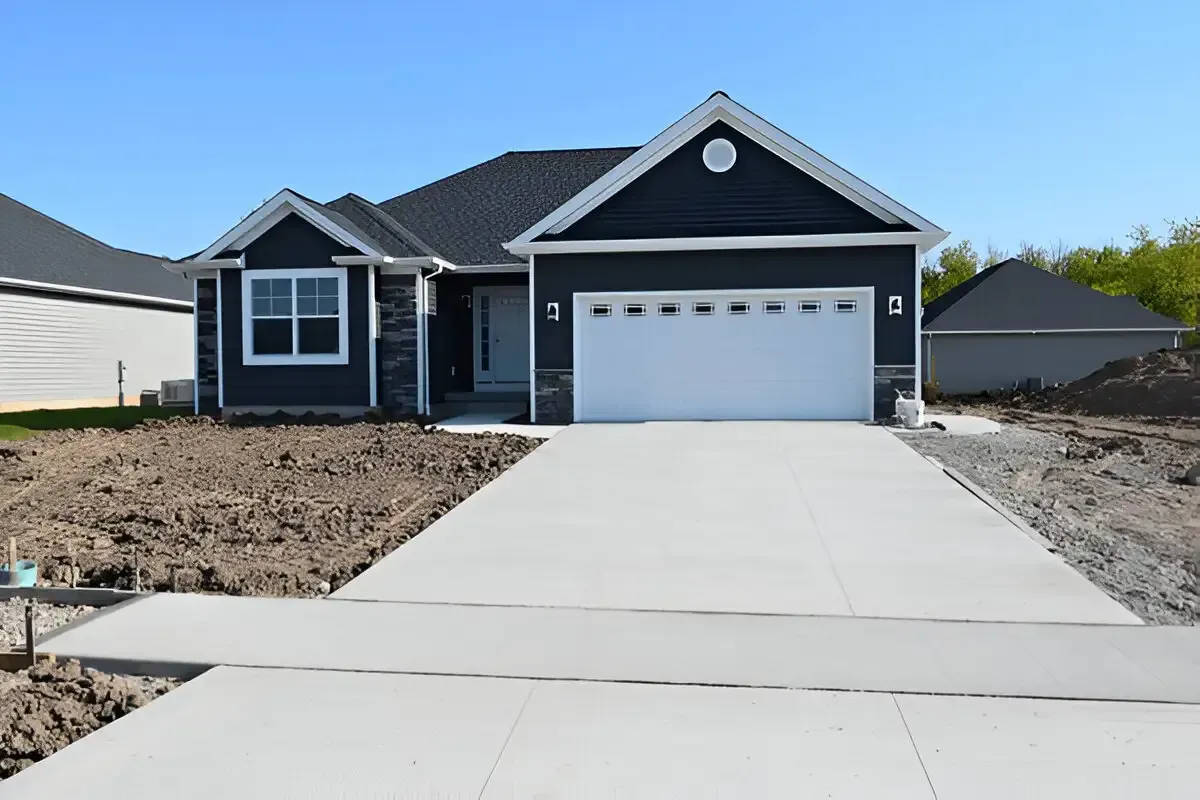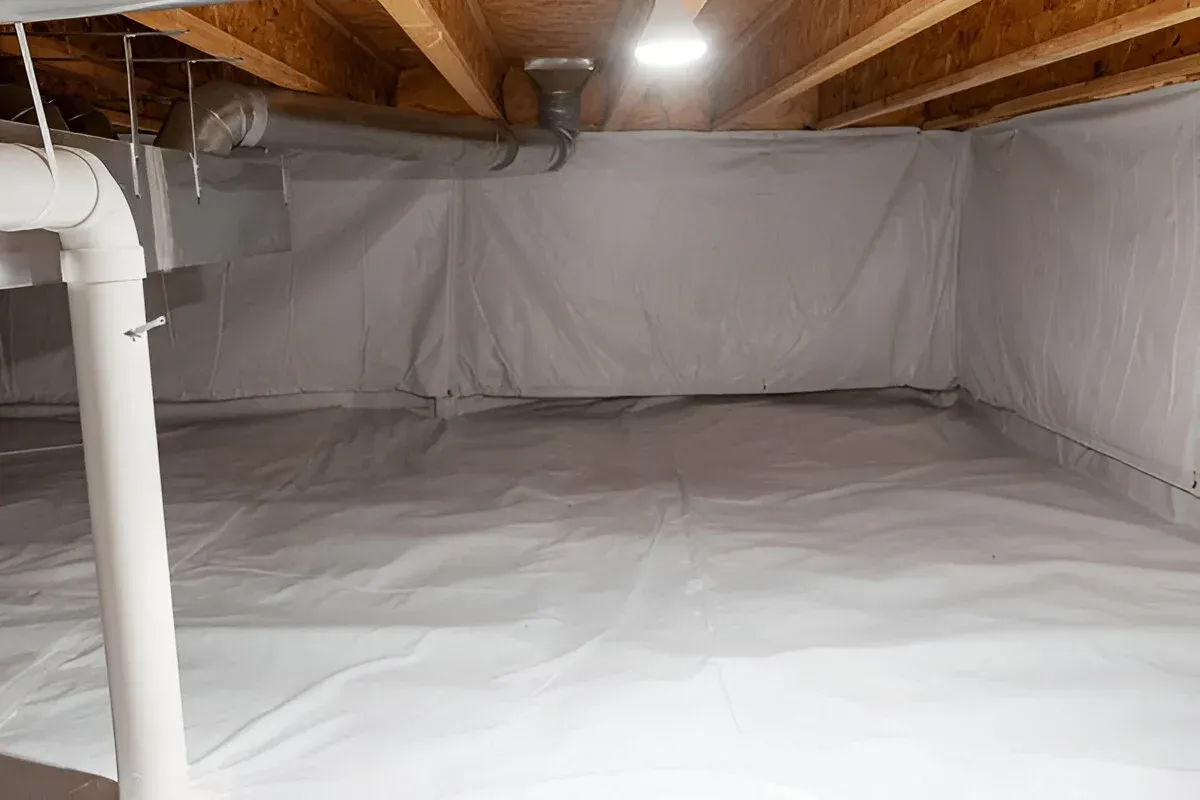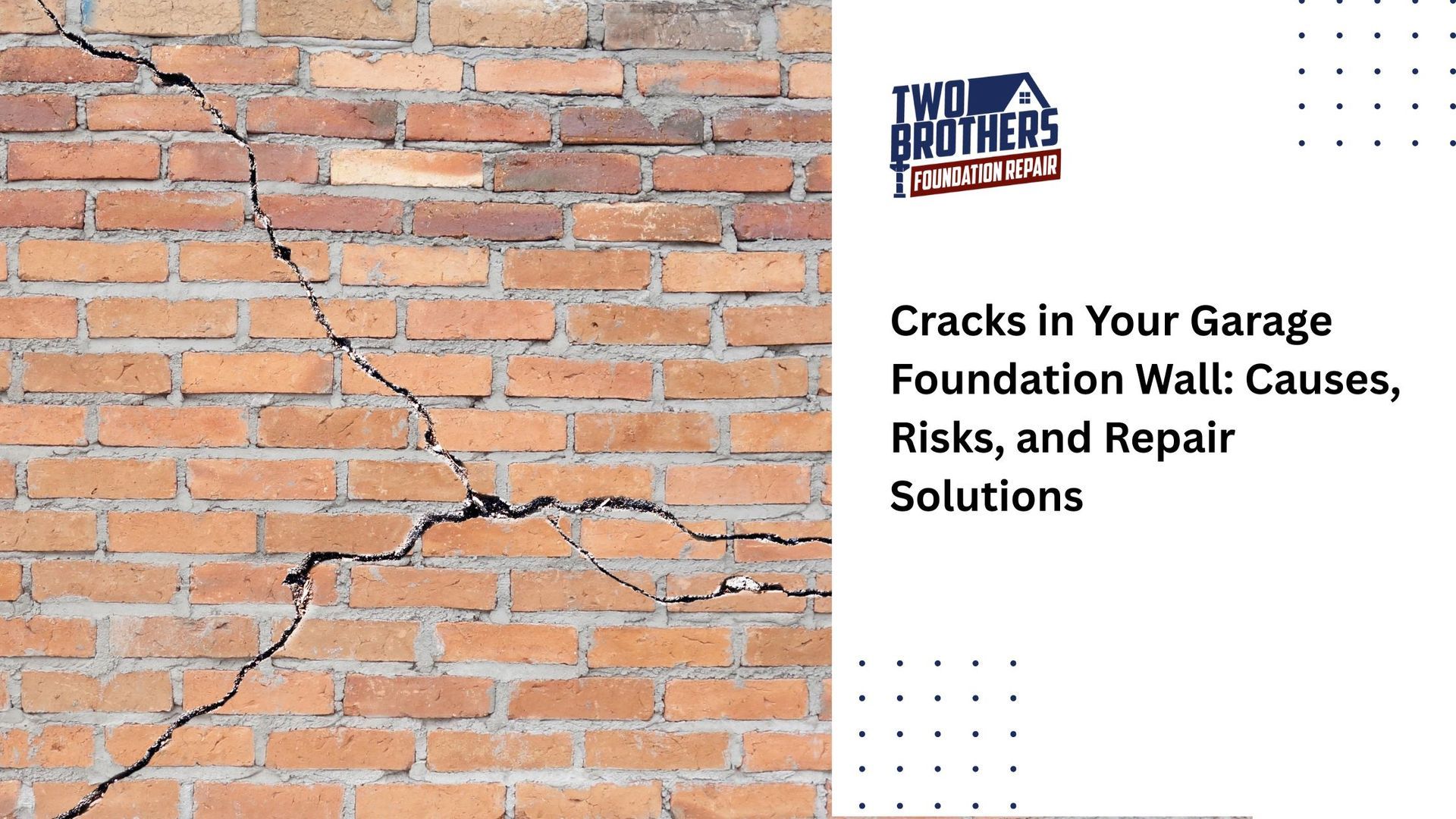Garage Foundation Types: Pros, Cons & Costs You Should Know
Every garage needs a solid foundation. Without one, the whole structure eventually pays the price.
The proper foundation protects your garage from moisture and shifting, maintains stability, and even increases its future resale value. Making the incorrect decision could result in costly repairs.
In this blog, we’ll discuss the most common garage foundation types, when to choose one, and what to watch out for.

Why is Choosing the Right Garage Foundation Important?
Your garage is your home’s base. If the base isn’t solid, the garage won’t last. You’ll start seeing cracks, doors that don’t close right, maybe even water sneaking in after a storm. And once those problems show up, they only get worse over time.
But if the foundation is done right, you don’t worry about any of that. The weight spreads evenly, the garage stays level, and you don’t have to think about settling or shifting every couple of years. It also makes sure you pass building inspections without any trouble.
The right foundation depends on where you live and what you’re building on. At Two Brothers Foundation, we look at the soil, the slope, and even how much rain your property gets before giving you an answer.
You may also like:
7 Different Garage Foundations Types
There are different garage foundation types based on different choices and reasons. At Two Brothers Foundation, we’ve installed just about every kind of garage foundation you can think of. We’ll walk you through the most common ones, explain when they make sense, and point out what to watch out for.
| Foundation Type | Best Use Case | Pros | Cons | Avg. Cost Range (per sq ft) |
|---|---|---|---|---|
| Concrete Slab Foundation | Daily-use, permanent garages | Affordable, durable, quick | Can crack, tough plumbing fixes | $6 – $12 |
| Gravel Pad Foundation | Sheds, small metal buildings | Cheap, fast, drains well | Shifts under heavy use | $5 – $10 |
| Crawl Space Foundation | Wet or uneven terrain | Easy repairs, good airflow | Costlier, attracts pests | $8 – $13 |
| Full Basement Foundation | Maximum space & protection | Extra space, weather safe | Very expensive, water risk | $15 – $30 |
| T-Shaped Foundation | Cold climates/frost issues | Very stable, frost-safe | Costly, longer to build | $12 – $18 |
| Floating Slab Foundation | Moderate frost areas | Affordable, decent on soil | Not for heavy structures | $8 – $14 |
| Hybrid Foundations | Problem soil/custom builds | Flexible, adaptable | Complex, often pricier | $10+ |
Costs are averages and vary by region, soil, and site conditions.
Similar Read:
Concrete Slab Foundation
Most garages are built on a concrete slab. Once the slab hardens, it creates a strong base that holds up under cars, trucks, and even heavier equipment without shifting.
In most cases, the slab is poured about four to eight inches thick. That’s usually enough for a standard garage. But larger vehicles may require more depth.
If you’re parking something heavier, like an RV, it might need to be thicker. The nice thing about this option is that it doesn’t take forever. Within a week of pouring, you can usually start framing. It’ll take about a month to fully cure, but you don’t have to wait that long to keep building.
But the ground must be packed densely. Additionally, the footings must be stronger than the rest of the slab, and the edges must slope properly.
At Two Brothers Foundation, we make sure all of that is done right while doing a concrete slab foundation. So you don’t end up with cracks or water creeping under your garage later.
Pros
- Affordable
- Durable
- Quick to install
Cons
- Can crack in freeze-thaw climates
- Harder to repair plumbing or drainage
- Needs proper prep to last
Best For
This is the go-to choice for permanent garages that get daily use and need something solid with little upkeep.
Gravel Pad Foundation
If you don’t want to spend a lot but still need a solid base, a gravel pad is usually the first option people think about.
At first, you need to clear and level the ground and lay down several inches of gravel. Sometimes, you may need to frame it with wood around the edges to keep everything in place.
That’s why you’ll see gravel pads under a lot of sheds, portable garages, and smaller metal buildings.
The big advantage here is drainage. Water doesn’t sit on gravel the way it can on soil or concrete. But gravel will shift if you’re parking heavier vehicles on it every day, and over time, you may need to re-level it.
At Two Brothers Foundation Repair, we build gravel pads so they’re compacted and stable, which keeps them from washing out or settling too fast.
Pros
- Affordable
- Fast install
- Drains water well
Cons
- Won’t handle heavy vehicles long-term
- Needs anchors for stability
- Can shift or settle over time
Best For
Best for sheds, small garages, or storage spaces when you want something cheap and simple that drains well.
Crawl Space Foundation
A crawl space foundation raises the garage floor a couple of feet off the ground.
That space underneath isn’t big, but it’s enough to get in and work on plumbing, wiring, or HVAC if you need to. It’s one of the main reasons people pick this option because it makes future repairs a lot easier.
Crawl spaces are also handy in places with high water levels or uneven ground since they keep the structure lifted. In hot and humid areas, the airflow below can help cut down on moisture.
At Two Brothers Foundation, we waterproof crawl spaces and make sure ventilation is handled right. So you don’t end up with mold or critters later.
Pros
- Easy access for repairs
- Good moisture control
Cons
- Higher cost than slabs
- Can attract pests
Best For
Best for garages on wet or uneven ground where access to utilities is important.
Full Basement Garage Foundation
A basement foundation is the big-ticket option. Instead of just pouring a slab, you’re digging down and building out a full basement with the garage sitting on top of it.
Sometimes the garage itself is below ground, with a driveway that slopes down to the door. Either way, you’re basically adding another whole level under your garage.
The upside is obvious. You can use it for storage, mechanical systems, or even finish it out as a living space if you want. Parking below ground keeps vehicles out of sight and out of the weather, too.
At Two Brothers Foundation, we always look at the site first and let you know if it’s practical before you spend a dime on it.
Pros
- Lots of extra space
- Cars are protected below ground
- Easy access to utilities
Cons
- Very costly
- Needs the right soil and drainage
- Not ideal with high water tables
Best For
Best when you want maximum space and protection, and you’ve got the budget and site conditions to make it work.
T-Shaped Foundation
A T-shaped foundation is poured deep into the ground, well below the frost line. So when the soil freezes and thaws, it doesn’t move the garage. On top of that footing, concrete walls are built, and then the slab for the floor is poured inside. From the side, it looks like a “T”, which is where the name comes from.
At Two Brothers Foundation, we know how to build frost-protected footings the right way so your garage holds up against the toughest winters.
Pros
- Very stable
- Stops frost heave
- Works on most soils
Cons
- Costs more than a slab
- Takes longer to build
Best For
Best for garages in cold regions where freezing ground would damage a regular slab.
Floating Slab Foundation
A floating slab sits right on top of the ground instead of being anchored with deep footings. The slab is poured on a prepared base of gravel or crushed stone, with rebar or wire mesh added for strength.
Because it isn’t tied into the soil, it’s designed to “float” with the natural expansion and contraction of the ground. That makes it a good middle-ground option where the soil shifts a little but not enough to demand a full frost-depth foundation.
Pros
- More affordable than deep footings
- Handles moderate frost
- Good for poor soils
Cons
- Not strong enough for large or heavy structures
- Depends heavily on soil prep
Best For
Best for garages in moderate frost areas where you want a sturdy foundation without the cost of deep excavation.
Hybrid Foundations
A hybrid foundation is when you mix different foundation types to get a better result.
For garages, this might mean laying a gravel base for drainage and then pouring a slab on top, providing a solid surface for parking. In other cases, it could mean using piers along with a footing to keep a building steady on tricky soil.
People also look at hybrid or alternative foundations when they want something greener. Materials like treated wood or ashcrete can reduce the environmental impact compared to straight concrete.
At Two Brothers Foundation, we create custom solutions for sites that require more than a standard approach. Instead of forcing one method, we tailor it so the garage sits on a base that’s solid, drains well, and lasts.
Pros
- Flexible for tough sites
- Can improve strength or drainage
Cons
- More complicated
- Often costs more
Best For
Best for garages on problem soil or projects where a standard foundation just won’t cut it.
Factors to Consider Before Choosing a Garage Foundation

There isn’t one “best” foundation that works for everyone. Consider these factors before you choose a garage foundation:
Soil and Drainage
Soil makes or breaks a foundation. Clay expands when it gets wet, sand shifts, and rocky soil can be a pain to level. A proper soil test takes the guesswork out. That’s why we always start there at Two Brothers Foundation. We’d rather catch problems before concrete ever touches the ground.
Climate and Frost Depth
Cold weather is rough on shallow foundations. When the ground freezes, it can push the whole slab out of place. That’s why colder areas usually need deeper footings or frost-protected foundations.
On the other hand, if you’re building in a spot that floods, raising the garage off the ground is the safer call.
Garage Size and Use
This one’s simple. A small storage shed doesn’t need the same foundation as a big workshop with trucks driving in and out every day.
Heavier garages need thicker concrete or stronger support. Skimp here and you’ll regret it.
Budget and Timeline
Not everyone has the same budget. Slabs are fast and cheaper, basements and T-shaped foundations are slower and pricier. You just have to decide what’s worth it for your site and how long you’re willing to wait.
Common Mistakes Homeowners Make While Choosing a Garage Foundation
A garage is only as good as the foundation it sits on. The problem is, a lot of homeowners make the same mistakes when choosing or building one. Some common mistakes are:
Choosing the Cheapest Option
It’s tempting to go with the lowest price. But a slab that works in one climate won’t necessarily hold up in another.
Skip frost protection, or use thin concrete, and you’ll end up with cracks and settling before long. What looks like savings at first usually turns into repair bills later.
Overlooking Drainage and Waterproofing
Water destroys more foundations than anything else. If there’s no drainage plan, water will sit right against the concrete.
That leads to moisture problems, erosion, and a shorter lifespan for the garage. Good waterproofing and site prep should never be optional. Many homeowners only realize this after leaks or flooding damage, when they also need services like Water damage restoration.
Trying DIY Foundation Work
Pouring a pad or laying gravel looks simple, but the details make or break it. Forget to compact the soil, pour the footings too shallow, or ignore frost depth, and the whole garage suffers. Plenty of DIY jobs look fine for a year or two, then fail when the ground shifts.
At Two Brothers Foundation, we test the soil, check the drainage, and build with your climate in mind. So the garage foundation is done right the first time.
Conclusion
Now you know different garage foundation types and what makes each one a good or bad fit. Choose the best foundation for your soil, climate, and the way you plan to use the garage.
If you’re ready to build or need repairs on an existing foundation, Two Brothers Foundation Repair can help. We offer free consultations, soil testing, and repair services so your garage is built on the right base.
FAQs
Which foundation lasts longest for garages?
A full concrete slab or a basement foundation usually lasts the longest because it supports the weight of the vehicle and won’t sink over time.
Can you build on gravel only?
Yes, but only for lighter structures like sheds or portable garages. Gravel pads drain well and are cheap to install, but they don’t hold up to heavy vehicles driving in and out every day. For a full-time garage, gravel alone usually isn’t enough.
How deep should a garage foundation be?
It depends on your climate. In warmer areas, four inches of concrete might be enough. In places with freezing winters, footings have to go deeper than the frost line, which can be a couple of feet down. That can mean digging several feet down.
What is the best option for attached vs. detached garages?
For attached garages, a concrete slab is usually the best fit because it ties cleanly into the house. Detached garages have more flexibility. A slab works well, but on sloped or wet lots, piers or crawl spaces may make more sense. At Two Brothers Foundation, we look at the site and design the option that matches your property and use.







